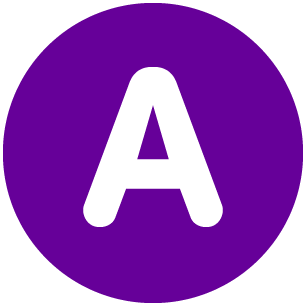Role: Product Designer / Editorial Designer / Art Director
Team: Agency Director (Project Stakeholder), Marketing Strategist, Sales Lead, Sales Rep, Editorial Contributors (x5)
Duration: 1 year
Agency: Strategic Holdings
Project Summary: I led the end-to-end design of a 70+ page resource guide for expatriates in the Yucatán Peninsula, combining editorial design, branding, and marketing. The first edition (5,000 copies) supported cultural integration, boosted the growth of small local businesses, and helped newcomers feel more confident navigating local life.
The Guide to Living in Yucatán: Final printed spreads showcasing accessible layouts, clear hierarchies, and culture-informed content structure.
UX Strategy Snapshot: A high-level overview of the project’s human-centered design audience, goals, constraints, and impact. This early framing helped translate editorial efforts into community-driven, user-informed decisions that balanced cultural context, tight timelines, and limited resources.
Problem: Navigating Daily Life with Cultural Awareness
Strategic Holdings, a Yucatecan marketing agency, identified a growing need among expatriates relocating to the Yucatán Peninsula, particularly those from the U.S., Canada, and Europe, who lacked local guidance to navigate daily life confidently and respectfully. They were seeking support across healthcare, real estate, immigration, and cultural integration.
Goal: Designing a Resource That Bridges Communities
To meet this need, the agency proposed a magazine-style guide featuring essential resources and local services. The aim was to help new residents orient themselves while also offering local businesses an opportunity to connect with this audience in a culturally thoughtful way.
“Our goal is to strengthen the Yucatán business community by connecting it with both national partners and the growing community of foreigners who visit, many of whom have chosen to make the Peninsula their new home.” - Strategic Holdings Director
Users and Discovery: Uncovering Needs Through Community Insights
To validate the concept, we launched qualitative research and held a discovery workshop with five members of the expat community. We explored their relocation journeys, challenges integrating into local communities, and expectations from a printed resource.
After synthesizing the insights and cross-referencing government relocation data, we defined three user personas and prioritized the one representing the largest segment. A team workshop followed, where we created an empathy map and reframed the project around three key user problems to solve:
1. Newly arrived expats need a way to feel socially and culturally connected because many struggle to integrate into tight-knit local communities.
2. They need support accessing practical and trustworthy resources because navigating healthcare, housing, and public systems is unfamiliar and often overwhelming.
3. They need guidance that helps them gain economic footing because starting fresh in a new country comes with financial risks and uncertainty.
One early challenge was balancing expats’ expectations for convenience with the community’s desire to protect cultural integrity. This led us to reframe the content strategy around shared values rather than quick tips.
We also identified a cultural tension from the local perspective. The deep Mayan roots of the Yucatecan community are a source of pride and identity, which can make integration feel more complex for outsiders. This was a critical consideration that we needed to approach with care and respect in our content, tone, and design.
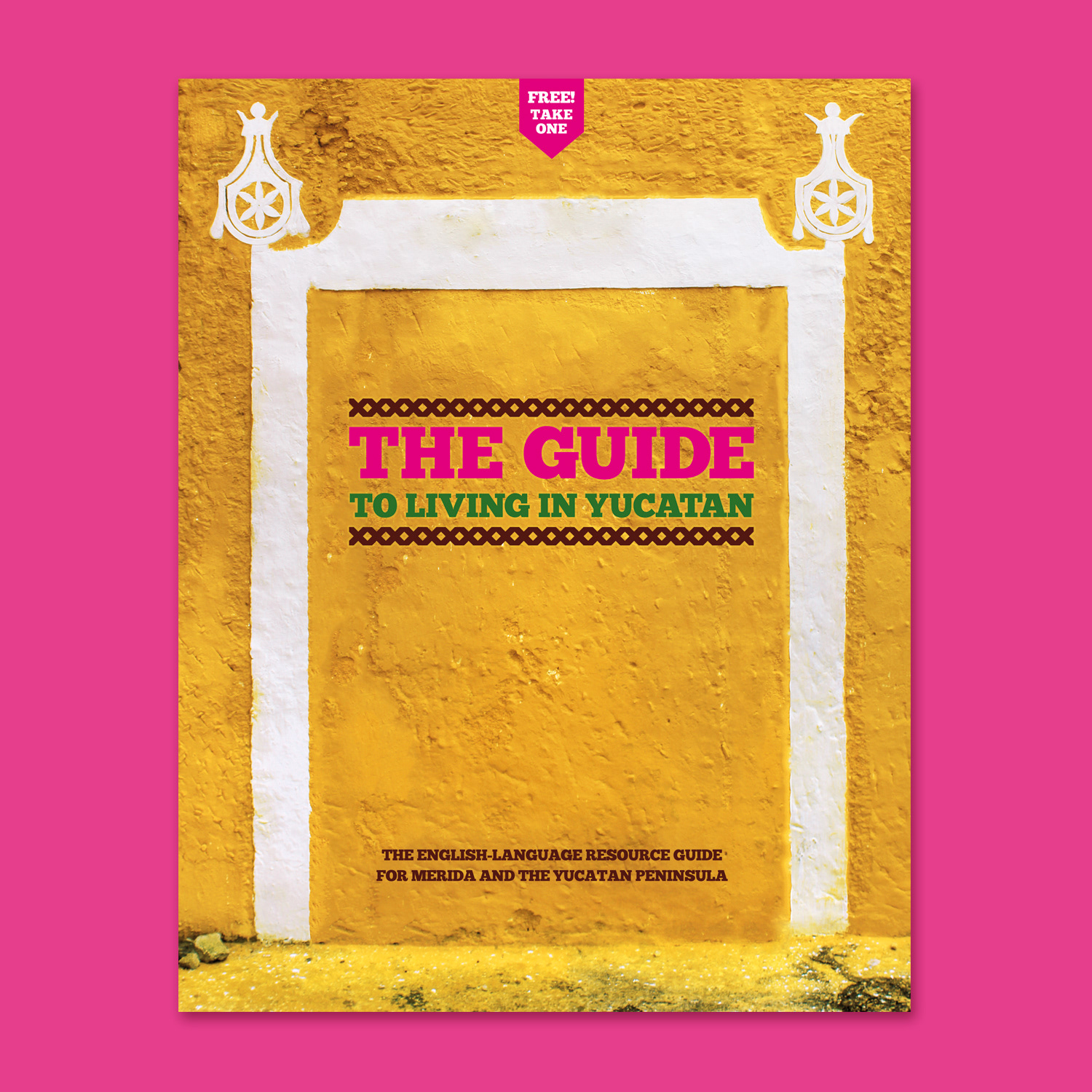
The first edition used bold color and regional textures to reflect Yucatán’s identity and invite trust from newly arrived expats.
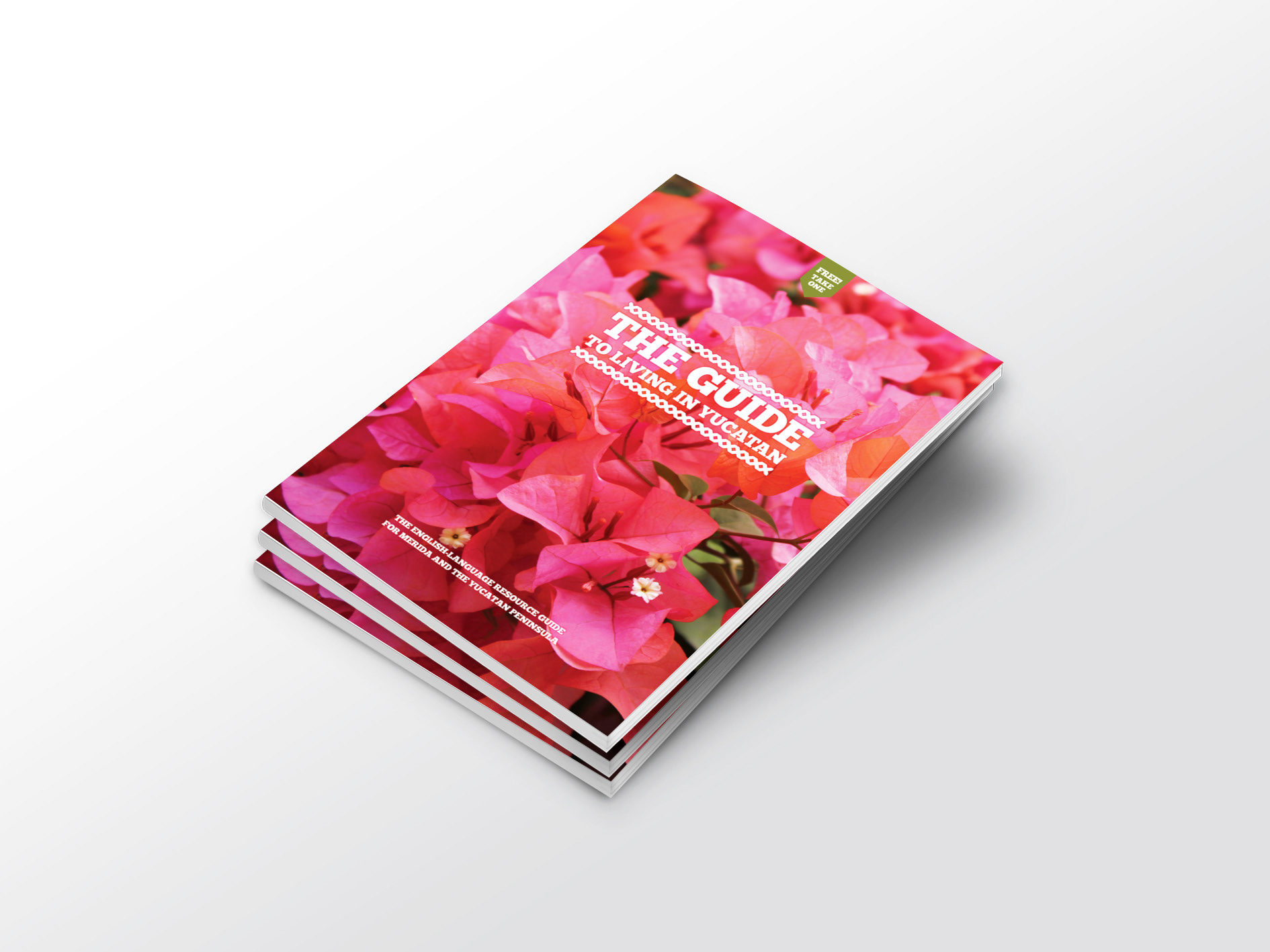
The second edition featured updated branding and visual storytelling to align with cultural tone, improve legibility, and enhance pickup appeal.
Definition and Strategy: Shaping a Repeatable, Scalable Local Experience
Experience and Visual Design
We approached the guide as a hybrid between a travel magazine and a trusted local resource. From cover to page flow, every design decision reflected accessibility, cultural warmth, and editorial usability.
I designed the entire visual identity and system, including layout grids, font styles, image treatments, and print finishes. I also personally photographed and edited key visuals for the content.
Information Architecture & Content Strategy
Based on the research, I developed an editorial information architecture that grouped content into themes like relocation logistics, communication tools, financial adaptation, and cultural immersion.
I collaborated closely with writers to ensure content aligned with our tone of voice, user needs, and format constraints, balancing content relevance and clarity across channels.
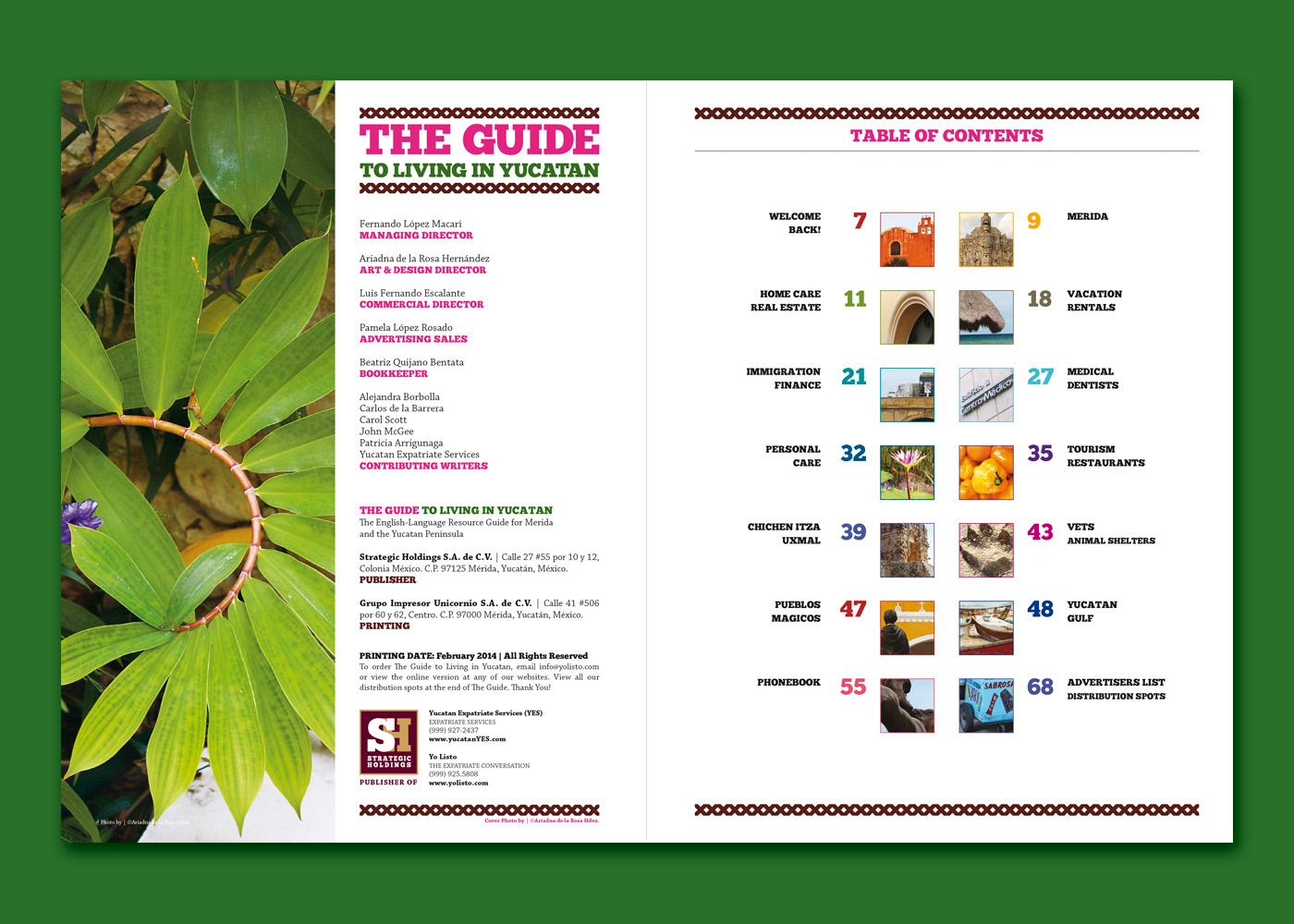
An inclusive, visual-first table of contents that orients readers quickly while showcasing the guide's multicultural contributors.
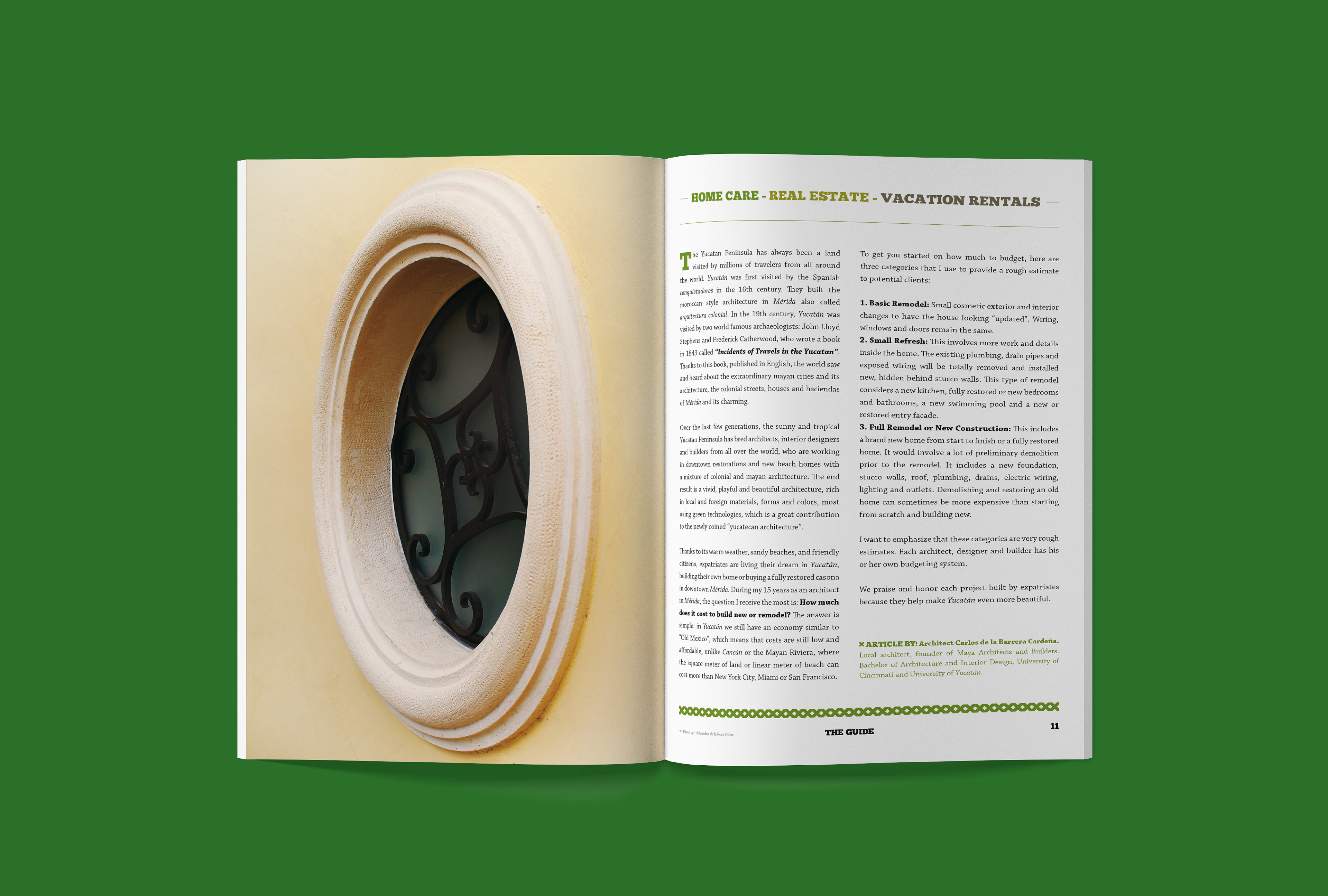
Editorial layout designed for clarity and calm, pairing local imagery with plain-language explanations of complex topics.
Branding & Cultural Relevance
The brand identity needed to strike a delicate balance, honoring Yucatecan roots while being approachable for international readers.
I created a logo that visually connected local architecture with editorial elegance. The color palette was bright, warm, and joyful. Inspired by local materials, patterns, and neighborhood markets.
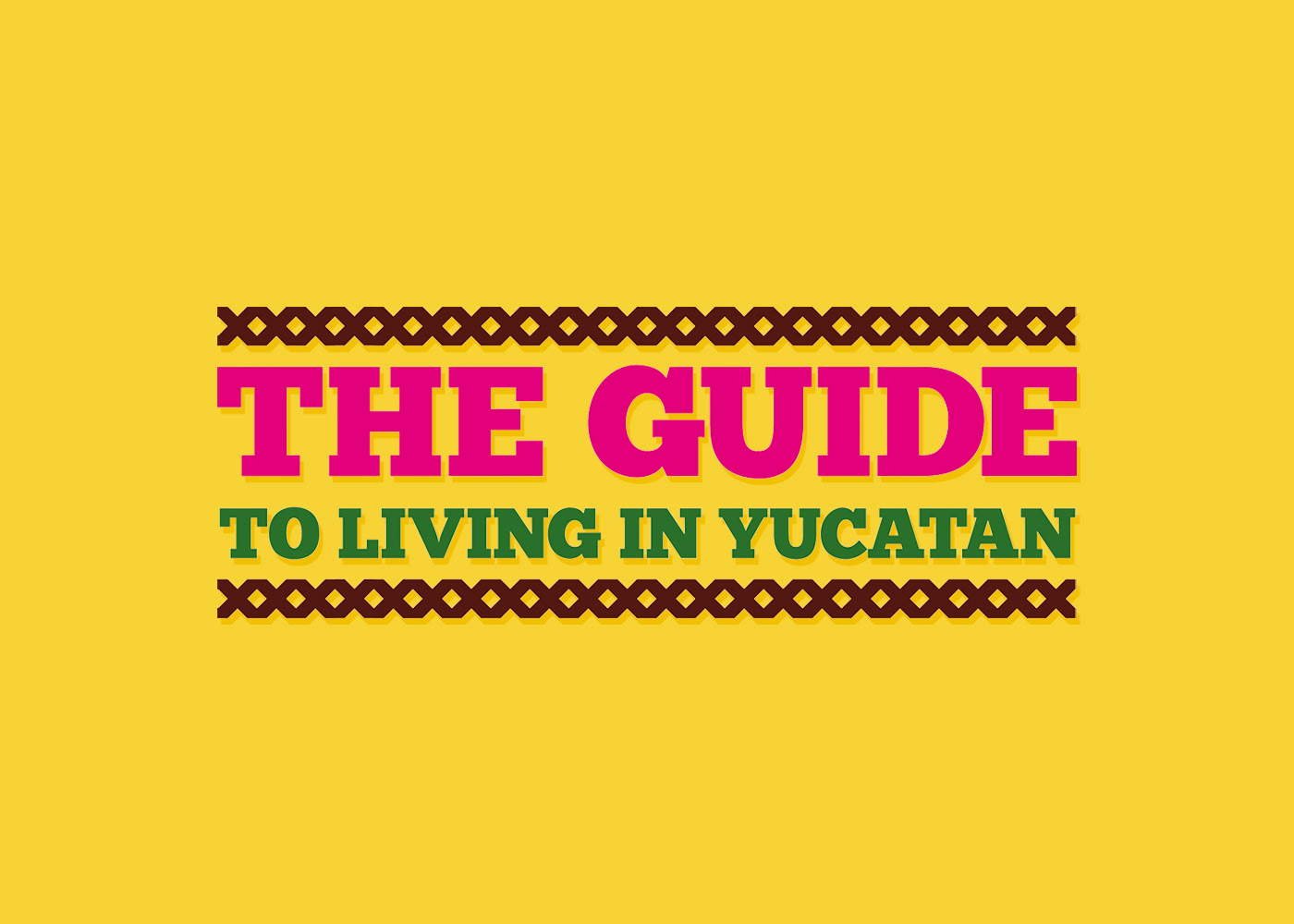
The guide’s vibrant title design draws from local visual traditions to feel familiar and trustworthy from first glance.
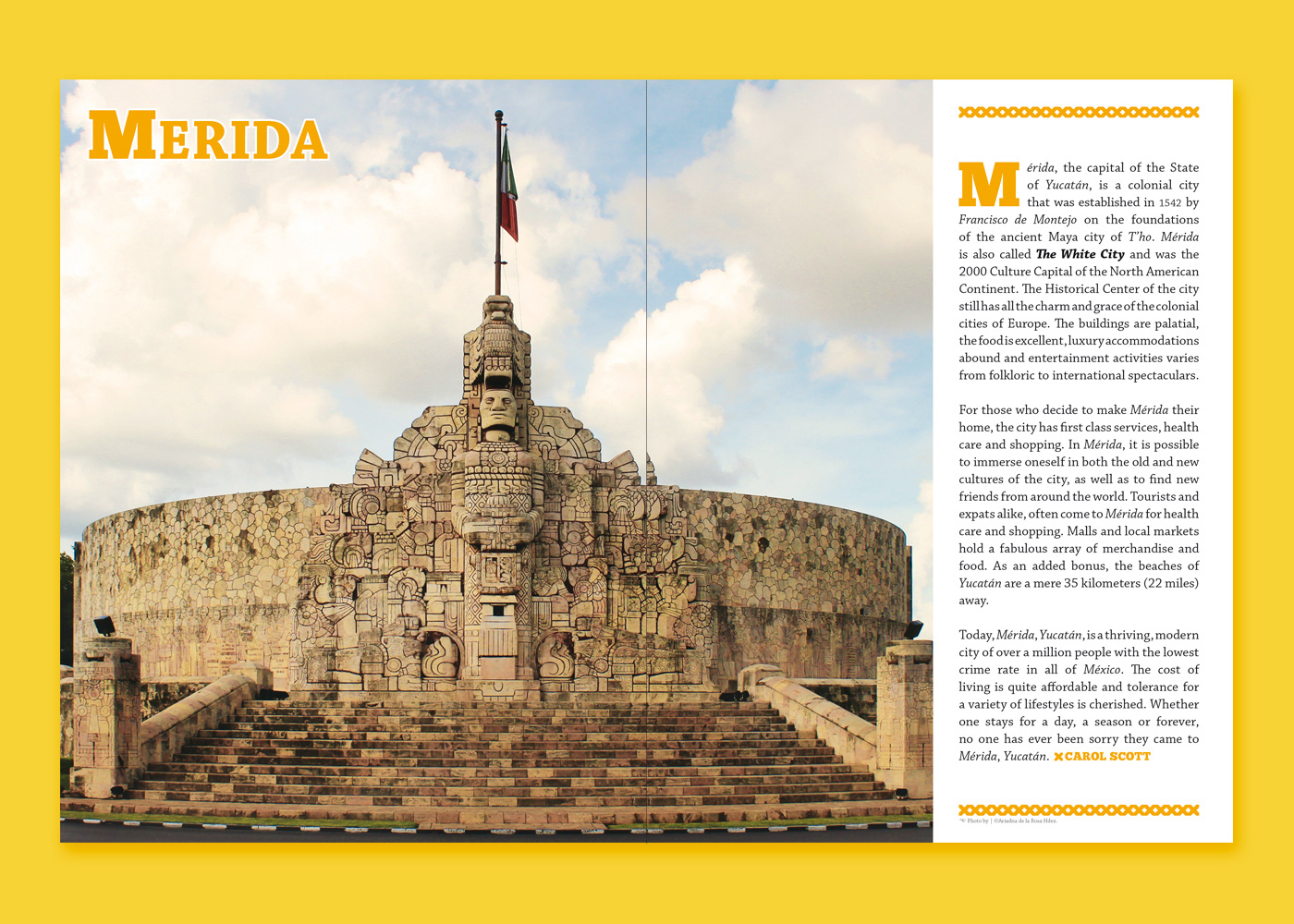
Feature pages combine rich cultural insights with an easy-to-scan layout designed for both quick reading and future reference.
Collaborating Across Teams
I coordinated with marketing and sales to develop advertiser packages and managed ad layouts for 50+ local and national sponsors. These ads had to feel visually integrated without breaking editorial consistency.
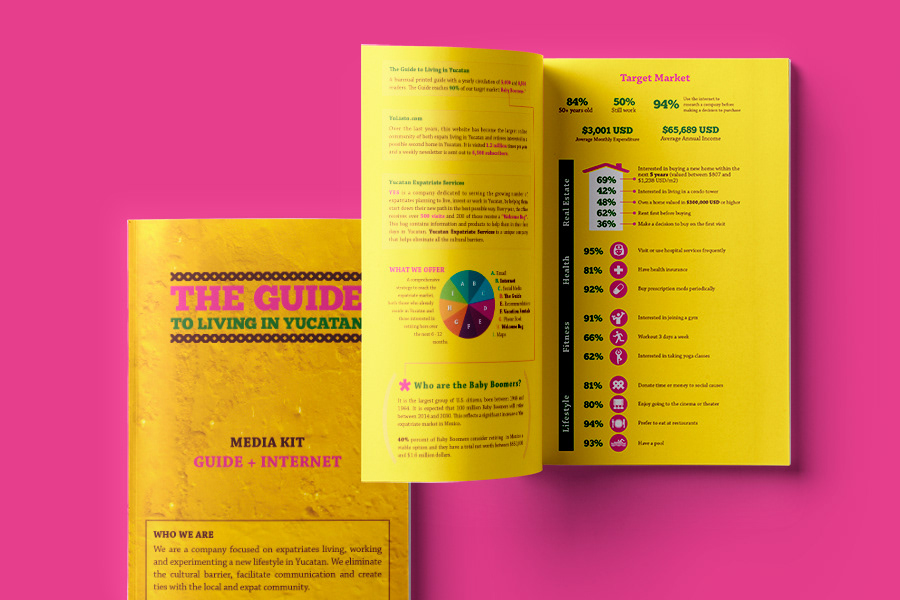
Brochure designed to support advertising sales with user insights, target market data, and media kit positioning.
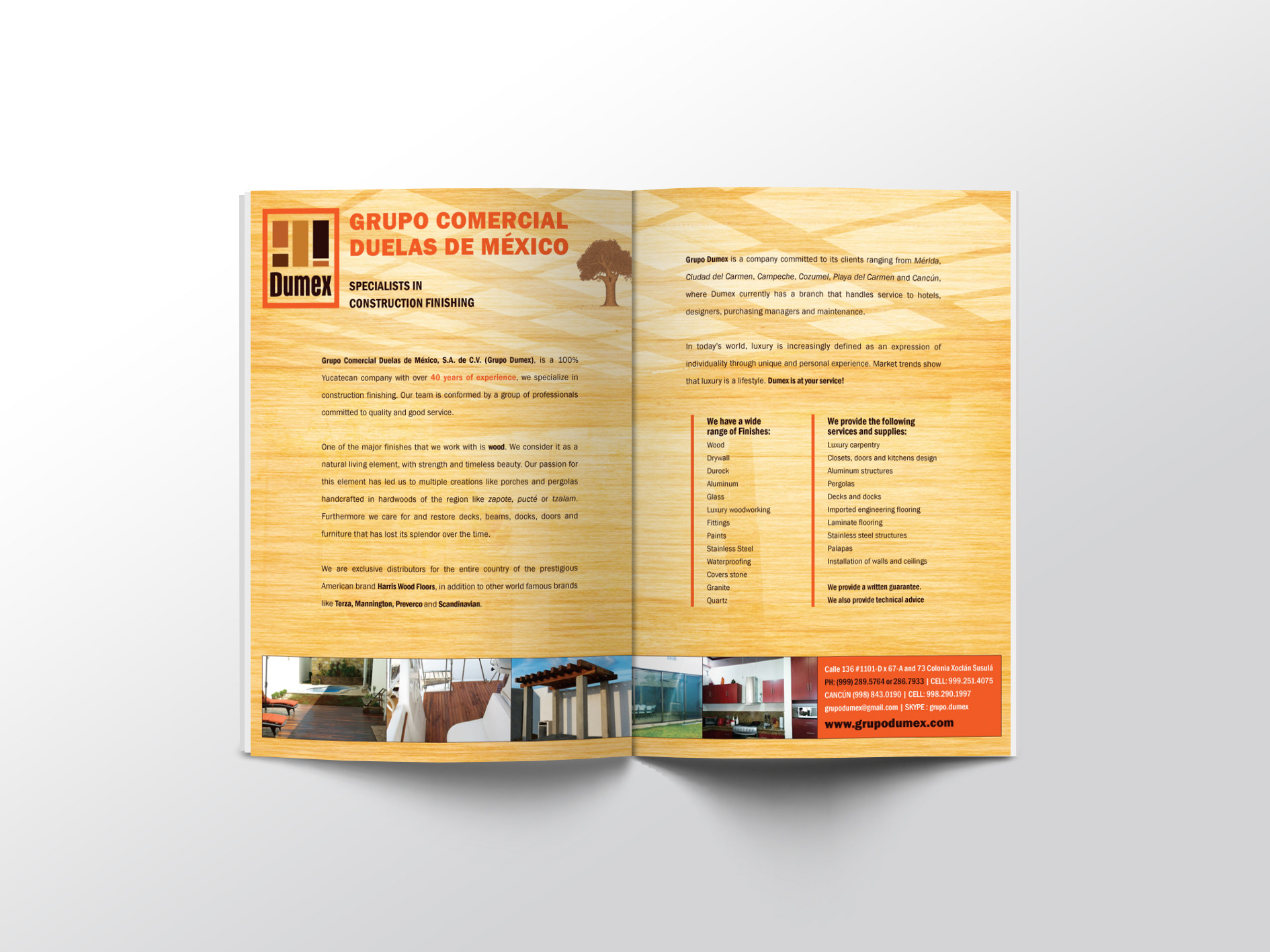
Custom full-spread ad layout designed to fit the brand while preserving readability within the editorial format.
Execution: Leading Production and Content Delivery
After testing several prototypes, I managed the entire print production process, from high-fidelity proofs to coordinating with vendors. We produced multiple test prints to ensure color calibration, binding durability, and finish quality.
Our original discovery participants were invited back to review the final mockups and provide feedback. We made the final adjustments based on their input before approving the print run.
Due to tight printing timelines, we prioritized essential content layouts and re-scoped some advanced interactive ideas into future digital formats.
Deliverables: Connecting Audiences Through Design, Print, and Distribution
Deliverables
• Complete editorial system (grid, layout, tone, and visual rules)
• Full guide design and print-ready production files: 70+ pages of curated content
• Brand identity and supporting marketing collateral
Distribution Strategy
The guide was printed in a first run of 5,000 copies and distributed to over 60 locations across Mérida, Izamal, and coastal communities. Each site received between 10 to 50 copies, ensuring effective targeting and findability.
Impact: Cultural Resonance and Sustainable Business Value
Impact
• Simplified the transition for expats with a single, trustworthy printed guide
• Strengthened cultural exchange between locals and foreigners
• Created new advertising opportunities for 20+ small businesses
• Inspired discussion about future editions and digital opportunities
Final guide montage in a local café: Real-world distribution was key to encouraging engagement from both expats and local partners. (Image created with AI)
Reflections and What’s Next: Building Scalable Systems for Cross-Cultural Design
Designing The Guide to Living in Yucatán strengthened my ability to balance diverse cultural perspectives and collaborate under local government and agency constraints. It reinforced how repeatable systems and adaptable processes can turn complex community needs into a cohesive, inclusive experience.
A) Workflow gaps reveal design opportunities. Unstructured ad submissions disrupted timelines, highlighting the need for a defined intake process and a centralized tracking system to improve reliability across contributors.
B) Measurement drives long-term trust. Advertisers requested clearer performance metrics, which surfaced an opportunity to propose an ROI framework to help the team demonstrate value and strengthen recurring partnerships.
C) Visibility amplifies content impact. Distribution feedback revealed that placement and presentation directly influenced reader engagement. This led to rethinking visual hierarchy and physical visibility as part of the overall user experience.
D) Scalability creates continuity. The project inspired new ways to extend the guide beyond print through digital editions and local events, establishing the foundation for a repeatable, community-centered model that can evolve.
What’s Next: Expanding Reach and Streamlining Production
Future editions can prioritize scalable growth and production efficiency. Applying design system thinking to both content and distribution can ensure consistency, reduce costs, and improve stakeholder collaboration. Key opportunities include:
• Developing a digital companion version to expand accessibility and support real-time ad performance tracking.
• Hosting community engagement events to deepen brand visibility and strengthen relationships with readers and advertisers.
• Creating automated ad submission workflows to standardize intake, reduce last-minute edits, and improve delivery accuracy.
Final Thoughts
This project reinforced that clarity and structure can unlock scalable creativity. By shaping repeatable systems across content, advertising, and collaboration, I helped evolve a regional publication into a sustainable design model that could adapt to future formats and audiences.
More importantly, this project reminded me that human connection and cultural empathy can be a foundation of scalable design. Whether building enterprise tools or community products, I aim to design systems that foster trust, continuity, and impact over time.
